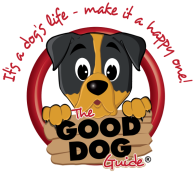Imagine cracking the code of your dog’s unique language. Each tail wag, bark, and playful bow is a piece of the conversational puzzle. This prospect isn’t a dream – it’s a possibility with a keen understanding of dog signals.
In this guide, we’ll explore different aspects of dog communication: body language, vocal signals, facial expressions, and tail wagging. We’ll also discuss how to respond effectively to your dog’s signals, which can help strengthen your bond.
Understanding Canine Body Language
Understanding canine body language provides valuable insights into their emotions. Here are some important postural signals and their meanings:
Relaxed posture: When your dog’s body is relaxed, with the tail down and ears in a natural position, it indicates contentment.
Play bow: If your dog lowers its body, stretches its front legs forward, and raises its tail, it’s probably an invitation to play.
Rigid body and raised hackles: This stance often signifies fear, aggression, or discomfort.
Rolling over: A dog exposing its belly can indicate submission or a playful request for belly rubs!
Decoding the Canine Vocal Language
Canine vocalisations, ranging from barks to whines and growls, offer a wealth of insights into their moods and needs. Let’s explore some common dog sounds and their meanings:
Barking: Dogs bark to communicate a variety of feelings, including danger awareness, attention-seeking, or excitement.
Whining: Whining is often a signal of anxiety, excitement, or a call for attention.
Growling: A growl can denote aggression, fear, or discomfort.
Howling: Dogs howl to communicate over distances, or due to feelings of loneliness.
Excessive barking and/or other vocalisations can indicate a wide range of issues. So, make sure to monitor your pup’s vocalisations and speak to your vet if you notice any changes.
Recognising Facial Expressions in Dogs
Dogs communicate their emotional states remarkably through facial expressions. Let’s take a look at some common expressions:
Relaxed eyes and mouth: These cues often suggest that your dog is comfortable and content.
Wide eyes and bared teeth: These signs could mean your dog is feeling threatened or aggressive.
Panting: While it’s normal for dogs to pant to cool down, excessive panting might indicate stress or pain.
Raised eyebrows: Dogs may raise their eyebrows when they’re intrigued by something.
The Role of Tail Wagging in Dog Communication
The wagging tail of a dog conveys more than mere joy; its nuances can narrate fascinating stories. The speed and direction of the wag are key indicators:
Fast wagging with wide swings: This typically denotes a joyful, excited dog.
Slow, stiff wagging: This can be a sign of uncertainty or threat perception.
Tail between legs: This posture often indicates fear or anxiety.
Straight-up tail: This shows that your dog is alert and attentive.
Tips for Responding to Your Dog’s Signals
A deeper understanding of your dog’s signals allows you to respond effectively, building trust and a stronger bond. It’s crucial to respect their boundaries, provide comfort when they’re uneasy, and reinforce positive behaviour with rewards.
Relationships with our furry friends, like human relationships, are based on mutual understanding and respect. Responding appropriately to your dog’s signals will make them feel secure, leading to a balanced, content canine companion.
When Should You Seek Professional Help?
Persistent signs of stress, aggression, or fear in your dog might call for professional help. Animal behaviourists, with their expertise in canine behaviour, can provide the necessary guidance.
If you’re unsure about managing certain behaviours, don’t hesitate to seek help. A professional can identify the root cause of a behaviour and provide a roadmap to improvement. Prioritise your dog’s mental well-being, just as you would their physical health.
Do You Truly Understand Your Furry Friend?
With a sharper understanding of your dog’s signals, you can elevate your relationship and create a harmonious environment.
Remember, your dog is always trying to communicate with you. And now, as pet parents, you’re better equipped to engage in this delightful, wordless conversation with your furry friend.
Article Supplied
